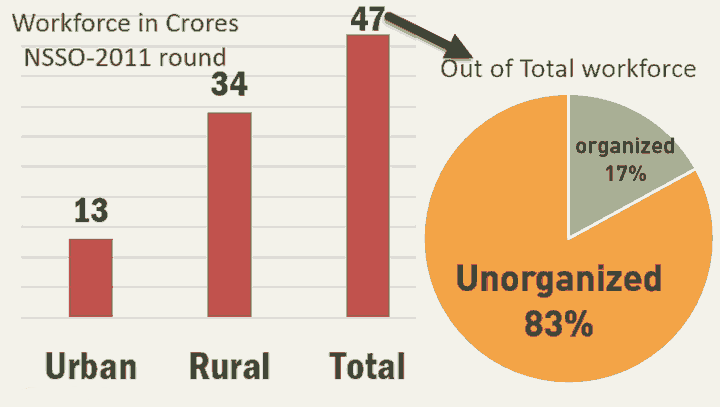
Delhi Jal Board — Mechanised machines to clean sewers | Recently many sewage workers died while doing their work.
Unorganised Sector Workforce
- Portable smart ID cards for unorganised workers — will cater the needs of 40 crore workers
- Unorganised Workers ID Numbers (UWIN)
- Unorganised Social Security Act, 2008
- First envisaged this provision
- UWIN — to every workers and include details of both nuclear and extended families
- This will also give government the data for targeted policy formulation with a evidence-based backing.
- Digital India -> Inclusive India
- Identification of the unorganised workers through — Door-to-Door surveys or facilitation centres and camps.
- SECC 2011 will be the basis of identification (as far as possible) together with assistance from the data of various Central Ministries
- Aadhar will be the basis of the entire network — Case verdict still pending in SC
Manual Scavengers

- Rehabilitation of Manual Scavengers | Swachh Bharat @150 anniversary of MG
- National Safai Karamchari Finance and Development Corporation (NSKFDC)
- Prohibition of Employment as Manual Scavengers and their Rehab Act, 2013
- Organise multi-stakeholders’ workshops and create awareness
- MoA with panchayat and municipal corporations to purchase sanitation related vehicles and equipments.
- Financial Assistance — easy loans, one time cash transfer
- Self Help Groups and community programmes.
|
Manual Scavengers (Safaai Karamchari) |
|
















